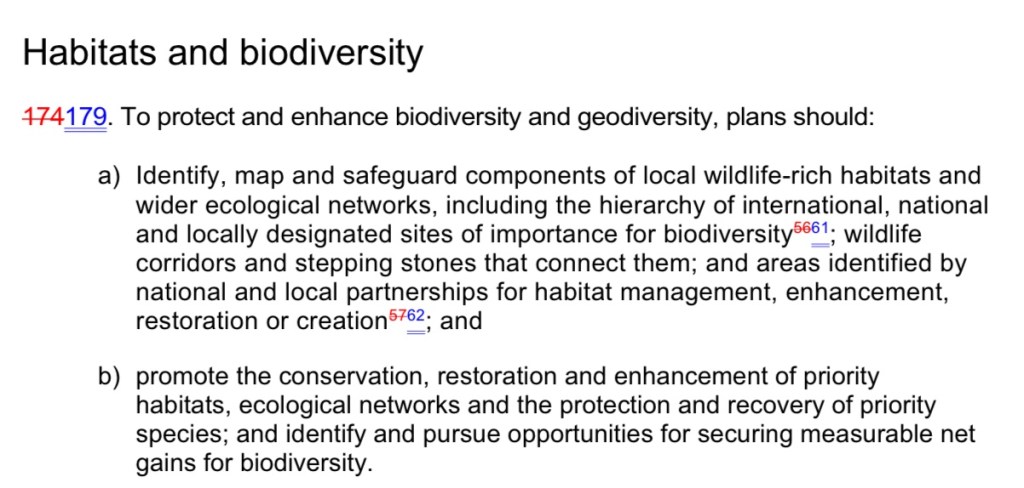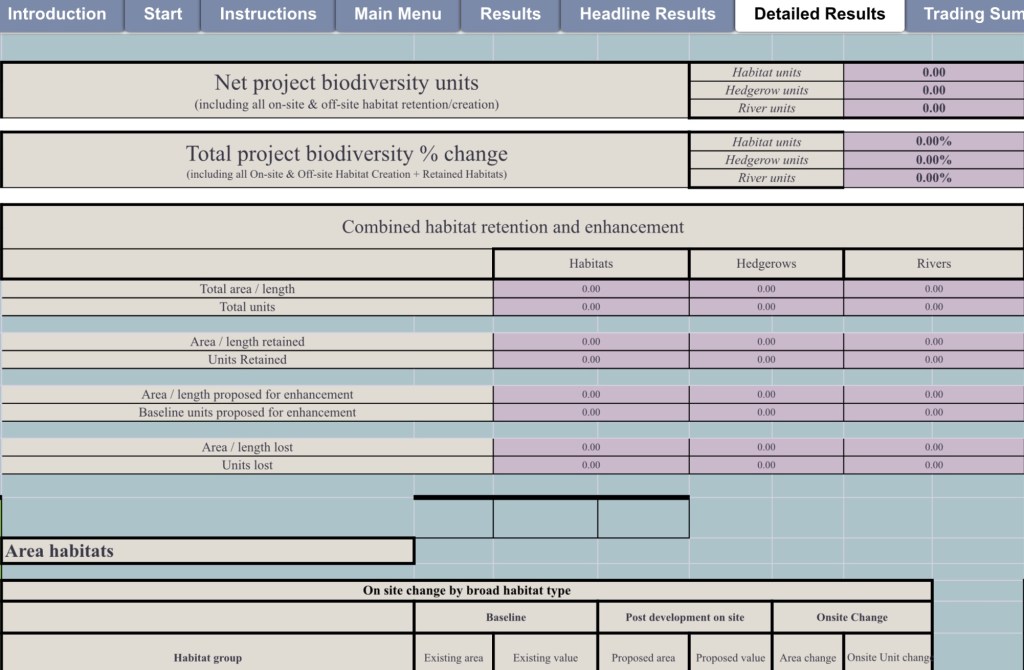We’re probably all increasingly familiar with the basic principles of biodiversity net gain. Even ahead of the statutory system being introduced which is the focus of this post, there is a growing policy basis for authorities to use at least a basic version of what is set out in the Environment Bill (although without any formal national prescription yet as to, for instance, the extent of net gain required or national process for the purchasing of credits).
The Environment Bill is reaching its final stages – report stage in the House of Lords is on 13 October 2021 and it then finally returns to the Commons (subject to the possibility of there then being some ping ponging between the Houses in relation to the Lords amendments I referred to in my 17 September 2021 blog post On Reshuffle Day, In Another Part Of The Forest) before receiving Royal Assent.
DEFRA indicated back in 2019 that once the Bill is enacted there will be a two year transitional period before the provisions on biodiversity net gain come into effect, but in that period there is going to be a lot of important stuff happening (and with the delays to the Bill whilst progress has been made on other aspects of the system might there be a prospect of that two years being abbreviated?). The robustness, and workability, of the system depends on:
⁃ sensible and efficient, but water-tight, administrative processes being set out in secondary legislation by way of regulations, for instance in relation to the pricing, availability and use of biodiversity credits
⁃ the availability of good data and methodologies (in relation to which Natural England has made good progress)
⁃ standardised, arrangements for securing long term (30 years plus) management arrangements by way of conservation covenants (not covered in this post but another crucial element of the Bill) and, our old friend, section 106 agreements
⁃ a workable system of monitoring and enforcement.
Before I briefly summarise the provisions on BNG in the Bill, given that the BNG system is going to live on for some time on a purely policy basis, I thought it was worth setting out that policy basis.
First of all there are relatively general references in the NPPF (extracts below showing amendments from the 2019 version).


There is more useful detail in the “net gain” passages within the natural environment section of the Government’s planning practice guidance.
Local authorities are under a general duty under Section 40 of the Natural Environment and Rural Communities Act 2006 to have regard, in the exercise of their functions, to the purpose of conserving biodiversity, but the level to which they can prescribe particular approaches to BNG and the level of net gain required depends on whether they have policies in place addressing these matters – with the weight to be attached to the policy depending on the nature of the document.
Pre-legislation we already of course have Natural England’s biodiversity metric 3.0 to work from, with much accompanying guidance, including guidance on using the calculation tool.
Turning to the Bill itself, the provisions on biodiversity net gain comprise clauses 99 to 104 and schedules 14 and 15
In brief:
Standard condition on planning permissions
Clause 99 introduces schedule 14, the effect of which I briefly summarise as follows:
• “The biodiversity gain objective is met in relation to development for which planning permission is granted if the biodiversity value attributable to the development exceeds the pre-development biodiversity value of the onsite habitat by at least the relevant percentage” which is 10% or such other percentage as is set out in regulations.
• The biodiversity value attributable to a development is “the post-development biodiversity value of the onsite habitat, (b) the biodiversity value, in relation to the development, of any registered offsite biodiversity gain allocated to the development”, and (c) the biodiversity value of any biodiversity credits purchased for the development”.
• The biodiversity metric is a document for measuring biodiversity value and it is to be published and updated from time to time by the Secretary of State.
• Pre-development biodiversity value for the site is measured as at the date of an application for planning permission (or the applicant and local planning authority may agree an earlier date). If activities are carried out on the land on or after 30 January 2020 without planning permission which reduce the biodiversity value of the onsite habitat, the biodiversity value is to be taken to be that which was the case immediately before those activities (a measure to avoid land owners intentionally reducing the pre-development biodiversity value).
• Post-development biodiversity value is “the projected value of the onsite habitat as at the time the development is completed”. There must be a condition or planning obligation requiring the habitat enhancement to be maintained for at least 30 years.
• Registered offsite biodiversity gain means any habitat enhancement where there is a legal commitment to carry it out and the enhancement is recorded in the biodiversity gain site register (see below).
• “Every planning permission granted for the development of land in England shall be deemed to have been granted subject to the condition” that a biodiversity gain plan has been submitted to and approved by the relevant planning authority.
• The biodiversity gain plan must show how the biodiversity gain objective is to be met either through on site enhancement by registered offsite biodiversity gain or by purchase of biodiversity credits. Regulations will set out the procedure the planning authority is to follow in determining whether to approve a biodiversity gain plan and the factors to be taken into account. At the moment there is no prioritising as between on-site, off-site and the purchasing of credits.
• The standard condition does not apply to development approved under a development order, on Crown land or any type of development which is specified within regulations as exempted.
• Regulations may modify or exclude these provisions for “irreplaceable habitat” and “must make provision requiring, in relation to any such development, the making of arrangements for the purpose of minimising the adverse effect of the development on the biodiversity of the onsite habitat”.
• There will be provisions in regulations to deal with the outline planning permissions, retrospective planning permissions and so on.
NSIPs
Clause 100 introduces schedule 15, which sets out how BNG works with in relation to nationally significant infrastructure projects, and the effect of which I briefly summarise as follows:
• If there is a national policy statement covering the type of development, it will be down to whether the national policy statement contains a biodiversity gain statement, in which case the biodiversity gain objective contained in the statement must be met.
• If there is no national policy statement covering the type of development, it will be down to whether the Secretary of State has made a biodiversity gain statement for that type of development, in which case the biodiversity gain objective contained in the statement must be met.
Biodiversity gain register
Clause 101 enables the Secretary of State to make regulations providing for a register of biodiversity gain sites – land which is legally required by conservation covenant (a binding mechanism provided for elsewhere in the Bill) or planning obligation to be maintained for habitat enhancement for at least 30 years and the “enhancement is made available to be allocated (conditionally or unconditionally, and whether for consideration or otherwise) in accordance with the terms of the covenant or obligation to one or more developments for which planning permission is granted”. The regulations will provide for the register to be open to the public, who should maintain it (the Secretary of State, Natural England “or any other person”), the information it includes and the procedure to be followed for a site to be placed on the register.
Biodiversity credits
Clause 102 allows the Secretary of State to “make arrangements under which a person who is entitled to carry out the development of any land may purchase a credit from the Secretary of State for the purpose of meeting the biodiversity gain objective”, including the biodiversity value of a credit, its pricing and procedural arrangements, including “reimbursement for credits purchased for development which is not carried out”. “In determining the amount payable under the arrangements for a credit of a given value the Secretary of State must have regard to the need to determine an amount which does not discourage the registration of land in the biodiversity gain sites register.” Payments must only be used by the Secretary of State for the carrying out of habitat enhancement works on land in England, purchasing the necessary land and operating the arrangements. He must report annually on payments received/used.
This is such a big subject and it’s only going to get bigger.
Some further reading:
Natural England’s blog post Biodiversity Net Gain – more than just a number (21 September 2021)
Explanatory notes on the Bill as it stood on 26 May 2021.
Net gain: summary of responses and government response (DEFRA, July 2019)
My 30 March 2019 blog post Biodiversity Net Gain: A Ladybird Guide.
Simon Ricketts, 2 October 2021
Personal views, et cetera
👋 For some further listening and discussion on this very subject, do join our clubhouse Planning Law Unplanned event at 6 pm on 5 September. Join the app here.


